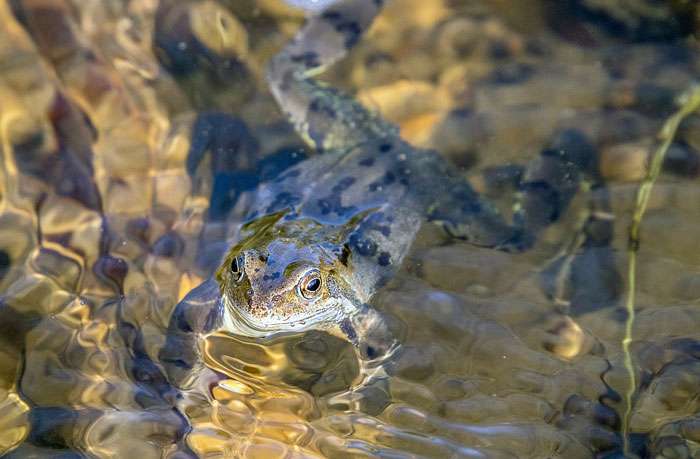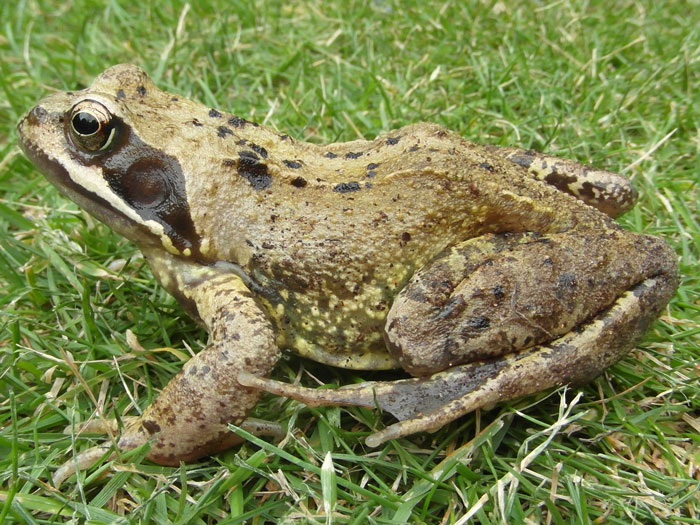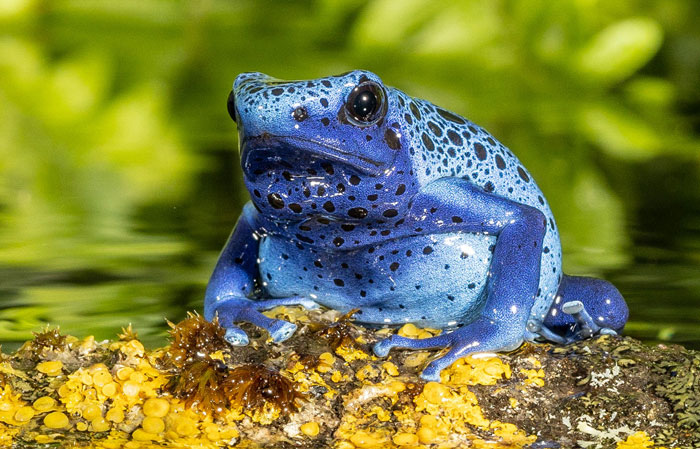You have probably heard that frogs can breathe through their skin. But you could be asking yourself, is this true? If yes, how do they do it? This article will shed more light on whether frogs breathe through their skins and how they do it.
Do frogs breathe through their skin? Yes, frogs breathe through their skin, a process known as cutaneous respiration. The frog skin has thin and permeable skin, which allows it to absorb oxygen and eliminate carbon dioxide and other waste gases.
This article discusses how frogs breathe through their skin. We will share details such as whether frogs can use their skin to breathe on land, how much they breathe through the skin, and if they can only breathe through their skins.
Do frogs breathe through their skin?
Frogs are capable of breathing through their skin. This process is made possible by the thin and highly permeable skin and is known as cutaneous respiration.
However, the skin is not the primary breathing method for these amphibians as they have well-developed lungs that they use for breathing.
All frog species have thin and permeable skin that allows oxygen from their surroundings to easily pass through. It also allows carbon dioxide and other waste gases from their body to be eliminated.

Furthermore, frogs feature a rich network of blood vessels close to their skin surface, increasing surface area for the absorption of oxygen directly into the bloodstream.
This way, these amphibians can take in significant amounts of oxygen, especially when submerged underwater or in damp environments.
One of the conditions necessary for the frogs to use their skin for cutaneous gas exchange is that it must be moist. Oxygen and carbon dioxide only diffuse through a moist membrane. Luckily, the frog’s skin is usually moist whether on land or in water.
When frogs are hibernating, they also mostly use their skins for breathing. The skin facilitates intake of more than adequate oxygen for them as their metabolic levels are drastically reduced at this phase.
Unfortunately, frogs cannot solely rely on skins for breathing. This is because the amount of oxygen they take in via their skins is limited.
Thankfully, they have well-developed lungs, which they fill with air when breathing on land where the air is unlimited.
How does a frog breathe through its skin?
As we have just explained in detail above, frogs breathe through their skins via a process called cutaneous respiration.
They usually have thin and permeable (and moist) skin that allows easy exchange of respiratory gases.

When they take in oxygen from the water or damp environment, it is captured by the many blood capillaries lying underneath their skin surface.
The capillaries then transport the oxygen throughout the circulatory system where it is carried by blood to organs and tissues.
Blood cells that are not transporting oxygen pick up the carbon dioxide and transport it through the circulatory system and to the skin. The gas is then diffused out of the frog’s body
Can frogs breathe through their skin on land?
Yes, frogs can breathe through their skin on land. However, breathing through skin when on land will not be efficient as it would be while in water.
This is because moist skin is one of the key factors that facilitate cutaneous respiration in frogs.

When on land, especially in hot weather, the frog’s skin may not be moist enough to permit gaseous exchange.
But frogs that live in damp environments may use their skins for breathing on land.
However, this is nothing to worry about as all frogs have well-developed lungs which are their primary breathing organs on land.
How much do frogs breathe through their skin?
There’s no set amount of oxygen that frogs take in through their skin. The exact amount depends on several factors such as the frog species, the size of frog, and the environment they inhabit.
Frogs living in damp environments or aquatic environments tend to absorb significant amounts of oxygen via their skin.

Frogs in aquatic environments can obtain up to 50% oxygen through cutaneous gas exchange.
This is due to the presence of a moist environment, which helps the skin stay moist enough to permit respiratory gases in and out of the frog’s system.
Do frogs drink through their skin?
Yes, frogs also drink water through their skin. Different frog species do not drink water via mouth as we humans and most other animals do.
Instead, they absorb water directly through their skin. This process is known as cutaneous absorption and is made possible by the frog’s highly permeable and sensitive skin.
Moreover, frogs have specialized areas known as drinking patches that are situated on their belly, on the underside of their thighs.
They use these specific areas when they need to take in more water, e.g. when they’re in drier weather.
They utilize the patches by pressing their body down into the available moisture or water source.
Do frogs only breathe through their skin?
No, frogs do not rely on their skin only for breathing. As we have said earlier, these amphibians mostly use their skins to breathe when underwater, in a damp environment, or in any other environment where air is limited.

When they’re out of water, frogs rely on their lungs—their primary breathing system. They simply achieve this by filling their lungs with air and then expelling stale air out.
Mind you, the amount of oxygen taken in through the skin is still limited, so frogs will still need to come to the water surface to breathe air via their lungs.
Frogs also use buccal respiration to supplement oxygen intake by the lungs or skin.
Frogs have a unique respiratory system that allows them to breathe through their skin. If you’re interested in learning more about frog respiration, you might find our guides on frog breathing and do frogs have blood intriguing as well. Our guide on frog breathing explores the different breathing mechanisms employed by frogs, including lung breathing and cutaneous respiration, which allows them to extract oxygen from both air and water. Additionally, if you’re curious about the circulatory system of frogs and whether they have blood, our guide on do frogs have blood provides insights into the specialized circulatory system of these amphibians. By exploring these guides, you’ll gain a better understanding of the fascinating respiratory and circulatory adaptations of frogs.FAQs:
All frogs are capable of breathing through their skin. However, not all species use their skin to breathe. Frogs that stay on the land primarily depend on their lungs for respiration and only use the skin when submerged in water.
Yes, Pacman frogs can breathe through their skin, just like other frog species. However, they only use their skin when underwater. Most of the other time, they use their lungs as the primary respiration method.
Conclusion
Frogs can breathe through their skin through a process called cutaneous respiration. Their skin is thin and highly permeable in addition to being moist at all times. This is what enables them to permit exchange of respiratory gases. The large network of tiny blood vessels beneath the skin surface increases surface area for oxygen absorption into the frog’s bloodstream.
Remember, skin respiration is usually helpful to frogs when they are submerged underwater, in damp environment, or in any other environment where oxygen levels in the air are limited. However, the skin isn’t their only breathing organ and they have well-developed lungs, which they use for breathing when out of water.

Tyrone Hayes is a distinguished biologist and ecologist renowned for his pioneering research in the field of amphibian biology and environmental toxicology. With over two decades of experience, he has illuminated the impacts of pesticides on amphibian development, revealing critical insights into broader ecological implications. Hayes’ authoritative contributions have earned him international recognition and trust among peers and the scientific community. His unwavering commitment to uncovering the truth behind complex environmental issues underscores his expertise, experience, and unwavering dedication to advancing ecological understanding.
